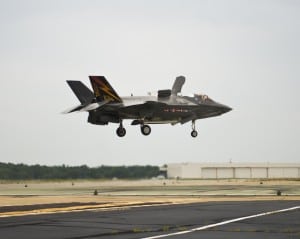
The F-35B, the Marine Corps variant of the Lightning II, has undergone its first power module and engine swap at sea, the Navy said Nov. 9.The milestone occurred in the hangar bay of amphibious assault ship USS America (LHA-6) in the Pacific Ocean, the Navy said.During the test, Marines followed an engine removal and replacement process developed by Marine Operational Test and Evaluation Squadron (VMX) 1, based at Marine Corps Air Station Yuma in Arizona. The Marines entered each step…

 By
By 








